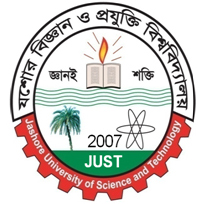Exploring the immunomodulatory potential of Bangladeshi medicinal plants; identification of active ingredients and their derivatization by biomimetic oxidation system.
Starts From: 01 September, 2020
End Date: 12 December, 2021
Funding authority: JSPS, Japan-UGC,Bangladesh
Grant: 5000000 yen
Pathogenesis of diseases like cancer, allergies, viral or bacterial infections, diabetic infections, inflammation, autoimmune conditions etc. in vertebrates is directly linked to the immune dysfunction or imbalance of immune system co-ordination. And an approach for the prophylaxis, treatment and control of such immunity related diseases is immunomodulation (Wen et al., 2012).
The search of agents for regulation of immune system, i.e., immunomodulators, was boosted in the ’70s with the establishment of their effect on certain malignant cancers. Possibility of applying such modulators in treating systemic lupus erythematosus, polyarthritis, HIV-AIDS and other immunodeficiency diseases further broadened the quest (Kersten et al., 2015). However, apart from a few synthetic preparations, substances with safe and precise immunomodulatory functions are yet to discover.
From time immemorial, complex and highly varied bioactive compounds from natural products, especially plants, has been the solution to most prominent disease complications. Even with the advent of high throughput screening and genomic era, 80% of drugs are natural products or their semi synthetic derivatives (Katiyar et al., 2012). Discovery of novel leads to fight cancer, super bugs or diabetes requires screening of natural resources once more (Patrick, 2013). Utilization of supercritical fluid, pressurized liquid, microwave, ultrasound or enzyme for plant extraction can provide unexplored compounds to be used as building blocks for novel leads (Azmir et al., 2013). Hence, initiating the exploration for immunomodulators from plant sources seems to be the most rational approach.
Several Bangladeshi medicinal plants with immunomodulatory potential have been reported, for instances, Azadirachta indica (Van der Nat et al., 1987), Asparagus racemosus (Gautam et al., 2004), Barleria prionitis (Ghule and Yeole, 2012), Centella asiatica (Jayathirtha and Mishra, 2004), Chenopodium ambrosioides (Cruz et al., 2007), Curcuma longa (Dcodhar et al., 2013), Emblica officinalis, Semecarpus anacardium, Ocimum sanctum (Bhat et al., 2012), Phyllanthus amarus, Phyllanthus urinaria (Ilangkovan et al., 2013), Tinospora cordifolia, Tinospora crispa (Haque et al., 2017), Withania somnifera (Kushwaha et al., 2012), Zingiber officinale (Tripathi et al., 2008) etc. Although, isolation or structure elucidation of potent immunomodulators from these plants have not been reported yet.
The proposed study, hence, have the potential to identify potential immunomodulators form Bangladeshi medicinal plants. Moreover, through the derivatization of active components by using dioxoruthenium (VI) tetraphenyl porphyrin based biomimetic oxidation system as reported by Kishor et. al., further structure activity relationship studies leading to the identification of active pharmacophore is also possible (Mazumder et al., 2012). The study, therefore, can be largely pertinent in fulfilling the current search of immunomodulating agents and consequently, curing formidable diseases.
Project Images



